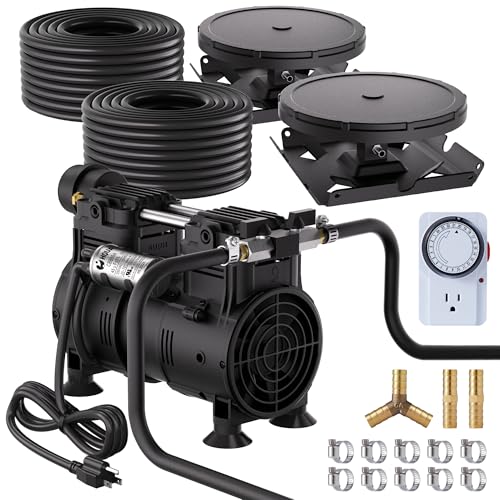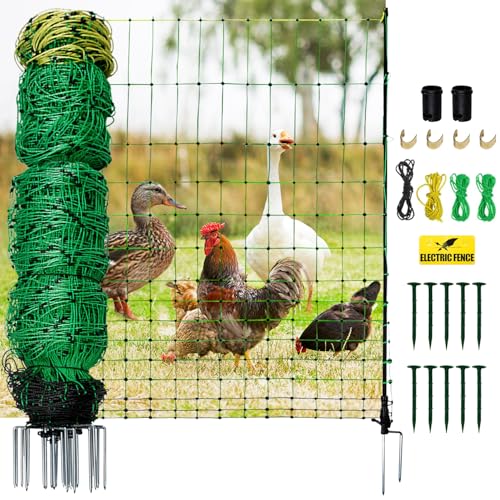
Swans are described using a variety of words and associations – beautiful, graceful, mean, loud, a symbol of enduring love, giant, scary, peaceful. And all of these descriptions can be considered accurate, however contradictory they may seem. It really depends on the species, the individual(s), and the circumstances.
The most commonly known swans worldwide are mute swans, trumpeter swans, and tundra swans. Somewhat lesser known is the striking black swan, native to Australia.
Mute swans (destructively invasive in the US but native to Europe and portions of Asia) mate for life. They’re the ones that can be seen as bonded pairs forming a heart shape with their necks as they rest.
Trumpeter swans and tundra swans also often mate for life, but tend to have more vertical necks and so don’t elicit as much fondness from people as they appear less “romantic” when resting with their mates. Perhaps the most territorial of the four is the black swan, which may also be described as the most unique, with its ebony plumage.
Ways to Attract Swans To Lakes & Ponds (Best Methods)
Note: Tundra swans, trumpeter swans, and duck species like pintails often travel together, so note that attracting one may attract the others, as well. If you live in the US and happen to attract mute swans (easily identifiable by the large black bump on their orange beak), you should contact a wildlife professional immediately as mute swans are incredibly destructive and a detriment to native waterfowl, fish, and plant species.
1) Create Swan Islands

If one doesn’t already exist, constructing a small “swan island” in your large pond or lake is a good way to not only attract swans, but to keep them around. Swan mates will likely set up shop on this island, as it’ll be away from people and out of reach of threats like dogs (either domestic or wild), bobcats, raccoons, and anything else that may make a snack of their eggs or cygnets.
Make sure the top of the island is a couple of feet above the water line, so as to prevent it from flooding during spring thaw and periods of heavy rainfall. It should also be around 50 to 100 feet in circumference to comfortably accommodate a pair of swans. If the water body is large enough, keep it several dozen feet away from any shore to help further deter predators and make the swans feel more safe and secluded.
Add plants like native grasses, cattails, and sedges to the island, as these will provide shelter, food, and female swans will use them to help build a nest for young. This island can be a true island, constructed of earth and rising from the water’s bottom substrate, or it can be a manmade floating island. Both options are perfectly suitable for swans.
2) Add Swan-Friendly Plants

As cygnets, swans will eat insects as well as vegetation. Adults, however, feed pretty much exclusively on submerged and emergent plants. Every now and then, they may eat small fish and fish eggs, if vegetation is limited or they’re feeling particularly voracious.
Plants that are highly favored by swans include eelgrass (Vallisneria), pondweed, duckweed (check to make sure that this is legal to have in your area, before planting), wild rice, sedges, rushes, and algae. During the cooler months when these plants are more scarce, swans often switch to food sources like lupine (as a bonus, this flower is gorgeous and draws in many butterflies), wheatgrass, cranberry and blueberry twigs and dried berries, and tubers like carrots, potatoes, and water plantain.
Incorporating a variety of these plants in and around the water are likely to attract swans, and convince them to stick around. When initially trying to persuade swans to stay, you may supplement their diet by tossing some spinach and kale into the water. These leafy greens are loaded with nutrients, and often favored by swans, particularly during mating and nesting season. Do not do this often or for prolonged periods, though, else the wild swans will become too dependent on humans and stop searching for their own food.
Absolutely do not feed them bread, cereals, or other human foods, as these can result in the development of angel wing, an inability to fly, and, possibly, death.
- Miniature Oasis: Create a tranquil water garden in any space.
- Non-GMO & Heirloom: Grow healthy and beautiful aquatic plants.
- Vibrant Blooms: Add a touch of color and elegance.
3) Improve Water Quality

This one may be a bit obvious, but swans, like many organisms, are sensitive to pollution. Keeping your water clean (i.e.: well-aerated, plenty of vegetation variety to filter and oxygenate water, no ammonia, nitrites, or chlorine, eliminating or at least minimizing the use of fertilizers and pesticides in or near the water, etc.) will make passing swans curious about your water and more likely to set up shop.
- Function: Compressed air blows into the bottom of the pond, increase the dissolved oxygen rate in ponds.Keeps water clear and Reduces the...
- Able to aerate ponds up to 3 acre, compressor operates up to 65' deep while the motor draws 6.2 amps and pumps 4.7 CFM of air.
- High efficient and quiet 3/4 Hp Oil-less Rocking Piston Air Pump. Two air filters, one outlet timer included.
4) Minimize Top Ice

While many swans migrate for the winter to warmer climates, in areas that experience winter they typically stick around from approximately April through October. To keep them coming back year after year, you may consider investing in a deicer or some other method to keep water ice free during this period so that the swans are free to forage and collect vegetation for nesting and feeding.
Deicers may not work for larger bodies of water, so making sure the water is kept moving and well-aerated will help to stave off ice, as well.
- De-Icer for ponds whose temperatures are down to 20 degrees Fahrenheit
- Highly-visible LED pilot light that indicates when unit is on
- Integrated thermostat shuts off the De-Icer when it overheats, protecting internal components from damage
5) Try Decoy Swans

Swans can be territorial, so it may seem odd to place a fake decoy swan to attract them. However, multiple pairs of swans are known to live on a single water body, depending on its size. Adding a decoy swan will make wild swans flying over see it and want to check out the pond or lake. After all, if it’s good enough for one swan, it might be good enough for them! And they’ll soon learn that the decoy poses to them no threat.
How to Keep Swans Are Happy & Safe
All of the above methods of attracting swans will also help them to feel happy and safe. However, there are a few more things that you can do to ensure their safety, if needed.
1) Implement Fencing

You shouldn’t fence in the entire pond or lake, as this would deter other organisms, like turtles, muskrats (which actually benefit swans, as swans often build their nests atop muskrat dens), and other waterfowl. However, placing some fencing around the swan island can help prevent potential predators from trying to swim to it. Only do this if the island is large enough that having fencing won’t make landing on the island an issue for the swans.
You should also keep one side open, so that the swans can still swim up to the island if they wish, but are able to easily defend it from that single opening if needed.
- Reliable Poultry Fence:The electric netting fence is 47.2in high and 164ft long. Poultry netting electric fence can confine chickens, ducks,...
- Stability:The electric poultry netting has 14 fiberglass galvanized double-pointed stakes, with pre-fixed fiberglass posts placed every...
- Conductivity:The electric fence netting has 14 horizontal wires (12 conductive wires. The bottom 2 wires are non-conductive) with a graded...
2) No Hunting

If the pond or lake is private or owned entirely by you, put up clear “no hunting” signs so that others know that the swans are not for the taking. While in some states of the US, trumpeter swans are protected from hunting, tundra swans are not and are often targeted. Mute swans may also be hunted in some areas of Europe, as can black swans in portions of Australia and New Zealand.
- Practical Metal Signs: Hy-Ko's signs for businesses and public notice are made from durable aluminum for long-lasting efficacy
- High Contrast Posted Signs: With high-contrast designs, these outdoor signs are easy to read regardless of weather so that your message...
- Large Sign Size: At 14” x 9.5”, these large signs for businesses are easy to see even at a distance for proper notification and alerting
3) Eliminate Invasive Species

Whether a plant or animal, invasive species wreak havoc on ecosystems. Research which plants and animals are native in your region, and reach out to a wildlife professional if you think that you have an invasive species in your pond or lake.
If these species are allowed to persist, native species, including native swans, may suffer a decline in population or move out of the area entirely as they’ll be unable to have access to the resources that they need for survival. For example, trumpeter and tundra swan populations in the US have struggled for decades, partially due to the establishment of invasive mute swans.
In the UK, there are some 3,000 invasive species. The US has over 4,000 species that are considered invasive, Australia has over 3,000, and while India has around 200 recognized invasive species, it is estimated that there are more that simply haven’t been studied yet.
The spread of invasive species is difficult to control as the planet has billions of people and most of us move about. It’s also become increasingly easy with the internet and worldwide shipping to obtain these species, be they plants for a garden, or a snake or bird as a pet. These species often escape the confines of the garden or home (or are erroneously “set free”), where they then establish in native landscapes, reproduce, and cause all manner of ecological and economic issues.
We can each do our part to minimize, and hopefully eliminate altogether, the spread and negative impacts of these invasive species by carefully researching an organism before we decide to obtain it, doing our part to only plant native plants, and committing to keep (and properly take care of) a pet once we purchase it and not release it into the wild, be it a cat, turtle, bird, or anything else.
If you find yourself or someone else unequipped to take care of an organism, whether plant or animal, that is not native to the area, please contact a licensed professional for a consultation on what can be done.
Is it Safe & Beneficial to Attract Swans?

All swans have the capability of being tranquil, peaceful, and of course beautiful, what with their gorgeous plumage, impressive size, and elegantly elongated necks as they glide across the still water. However, all swans also have to propensity to be bawdy, pushy, and downright mean if they feel somehow threatened. Anyone who’s had a run-in with an irate swan after getting a bit too close can tell you how terribly painful and merciless their bite is.
While it’s not recommended to attract swans to a goldfish or koi pond, they can be quite beneficial to large ponds and lakes, and add a certain regal aesthetic. Keep in mind that swans, particularly mated pairs, may stick around for up to 20 years if the area is suitable.
They also provide myriad benefits to ecosystems (when in their native region), helping to disperse the seeds of aquatic vegetation, while also feeding on these plants and thus keeping their populations in check. This in turn helps maintain openings in the water, which provide habitat and greater ease of movement for fish, amphibians, muskrats, and other waterfowl.







